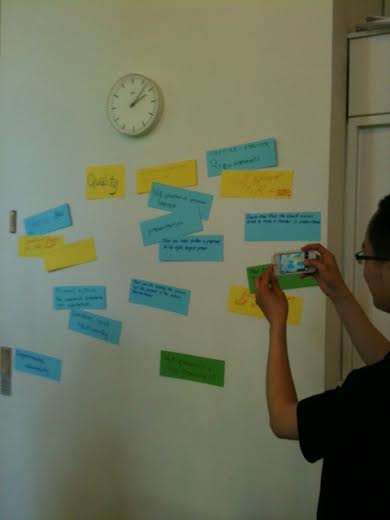Brainwalking is a classic brainstorm variant, which helps activate all participants and potentially enables lots of ideas. In the brainwalk each student or group writes a single idea on a flip-chart, which is placed on a wall. The other participants then visit the flip-charts and silently further develop the ideas or add new ones.
This way Brainwalking is based on the principle of cross-pollination by having the participants build upon each other’s ideas in a structured way, where you get to utilize all the knowledge and creative input of the participants in the room.
It can also be beneficial to use, when the participants do not feel creative or perhaps are a bit introvert, because the exercise encourages everyone to participate and have their ideas be heard.
In order to set a frame for the brainstorm use this method: How might we …?.


